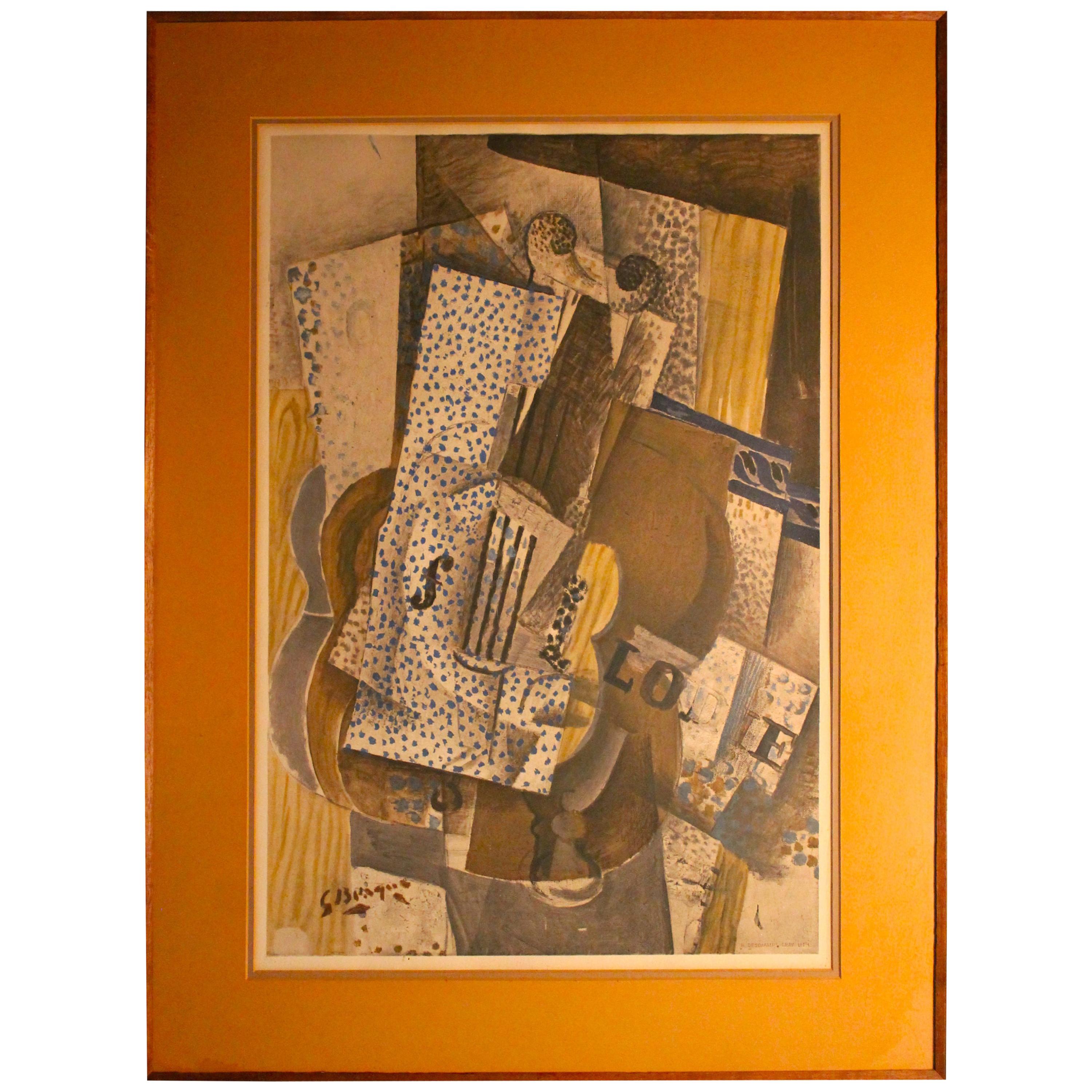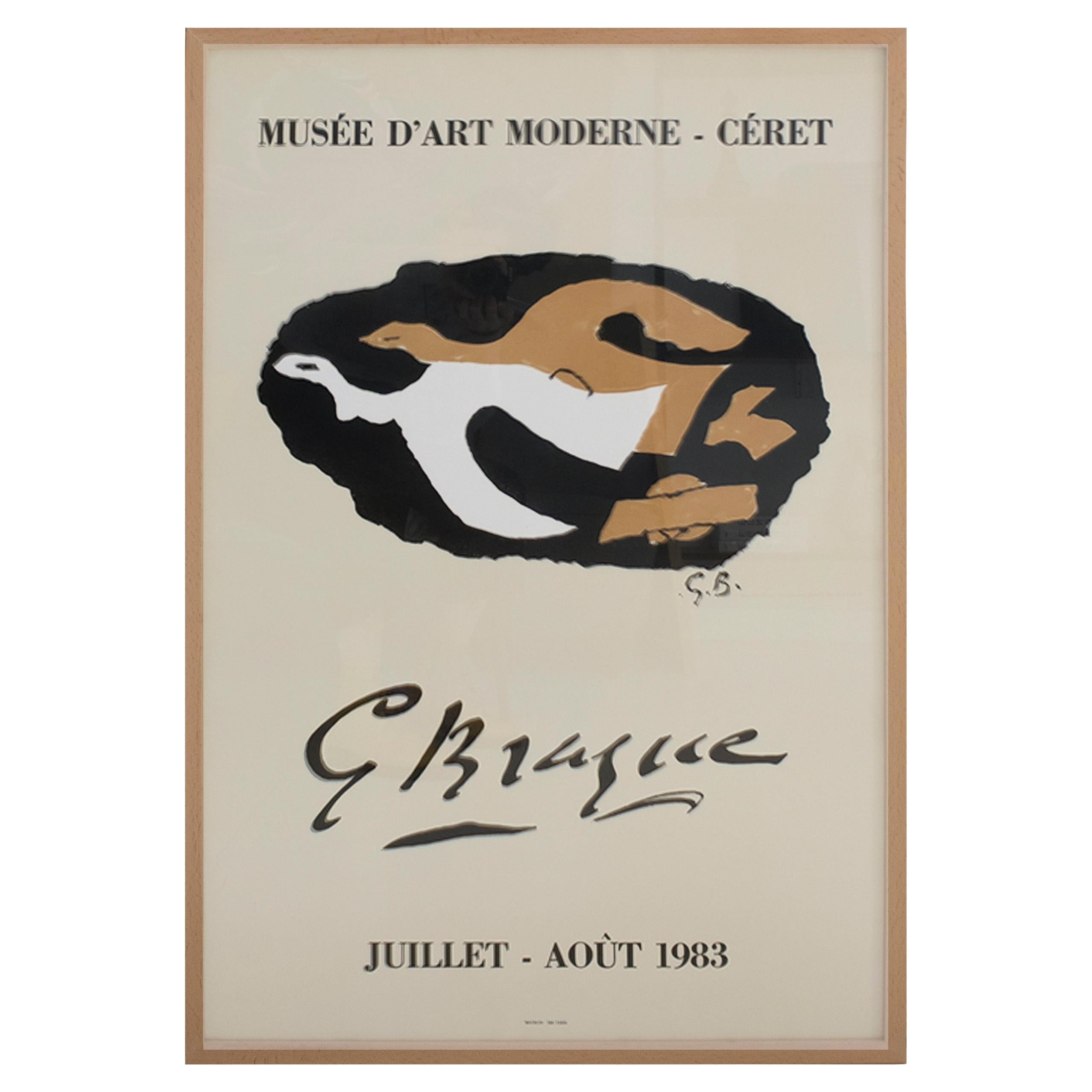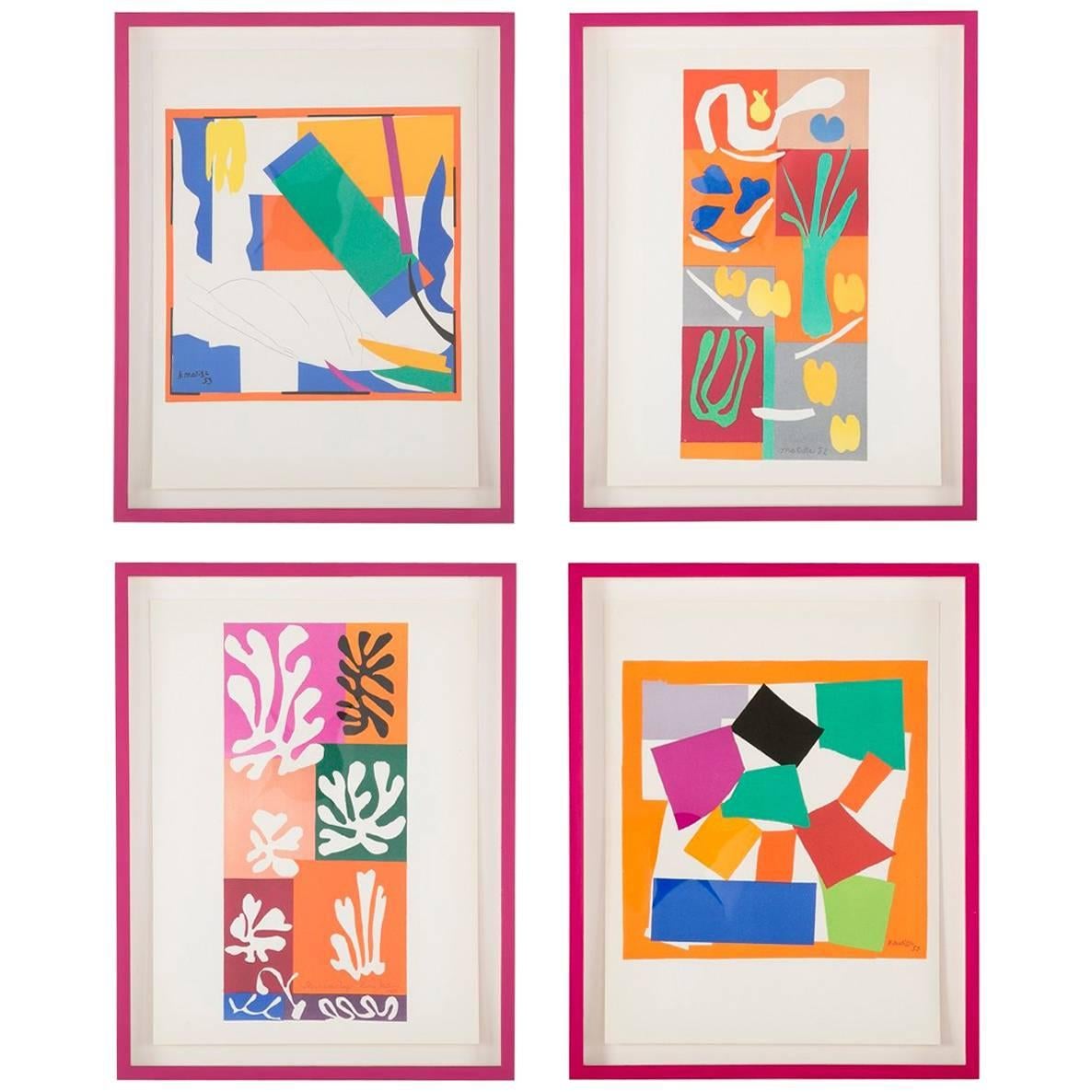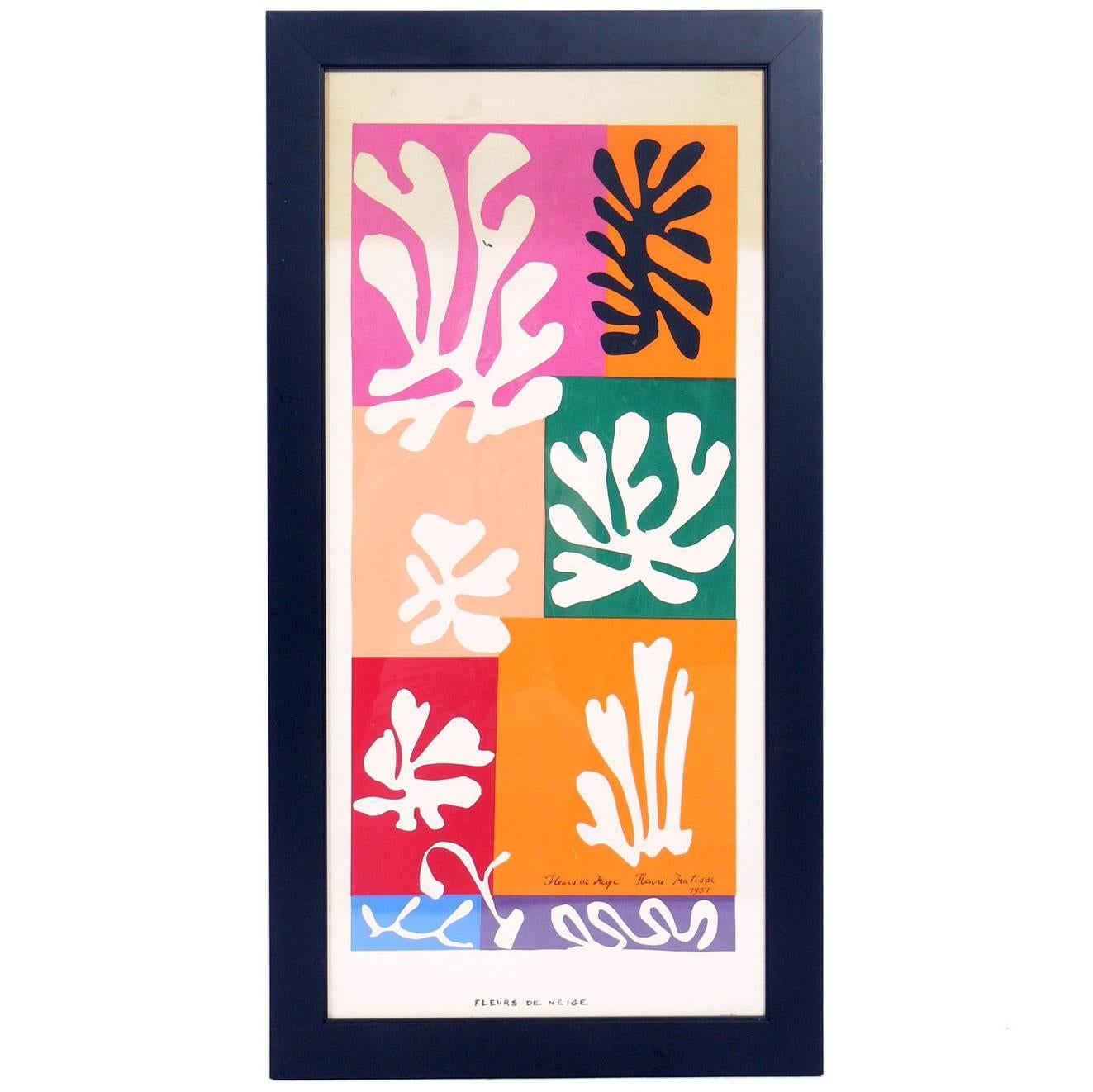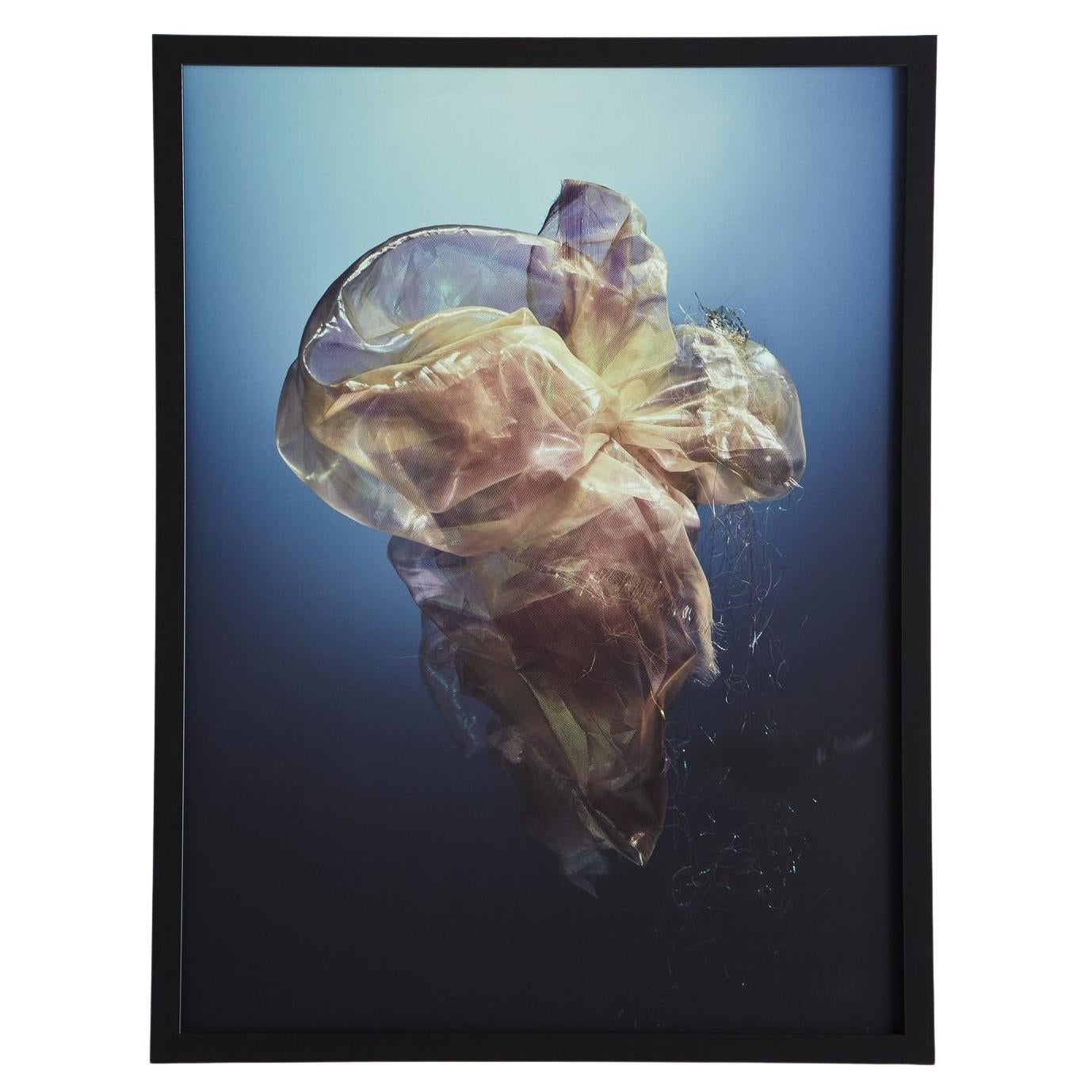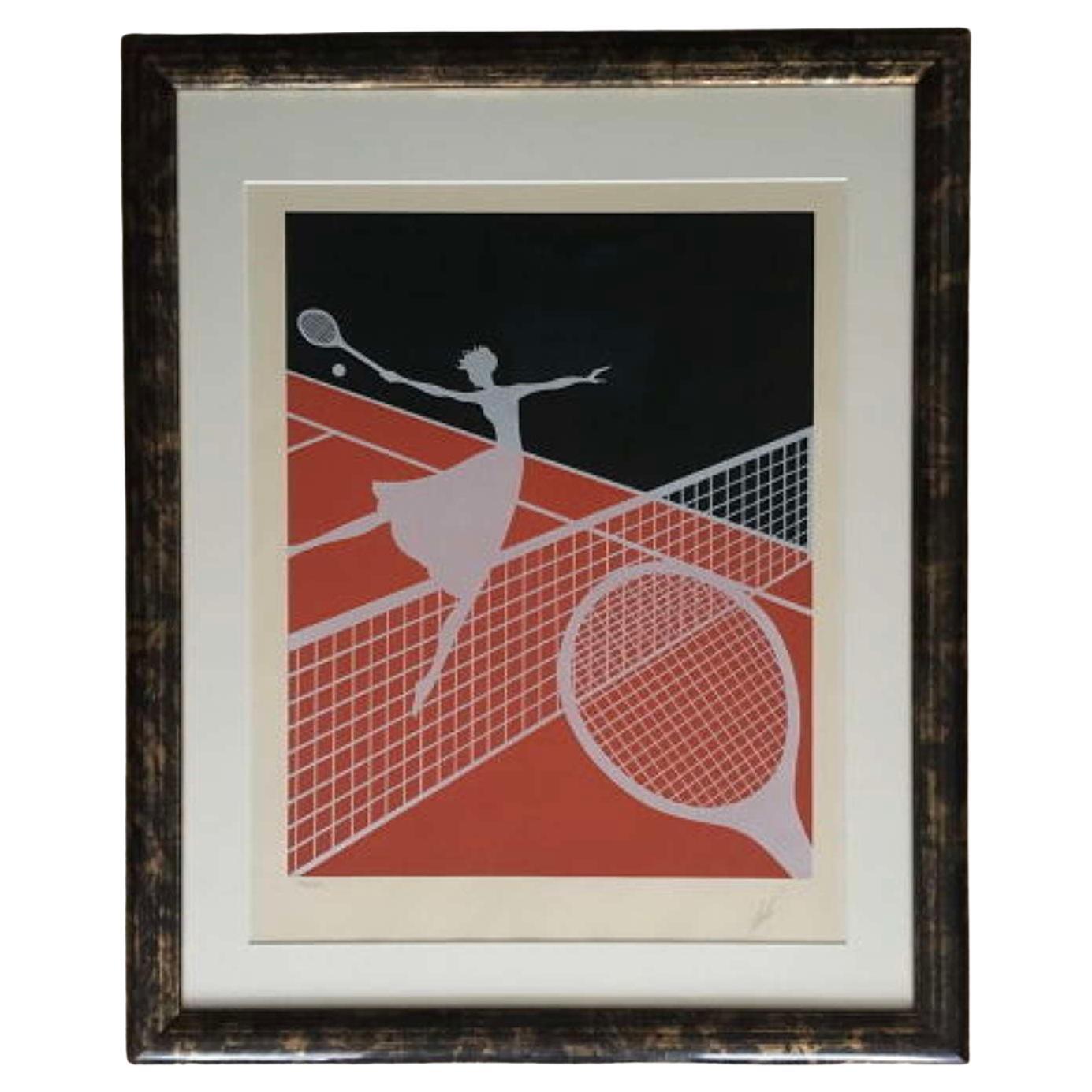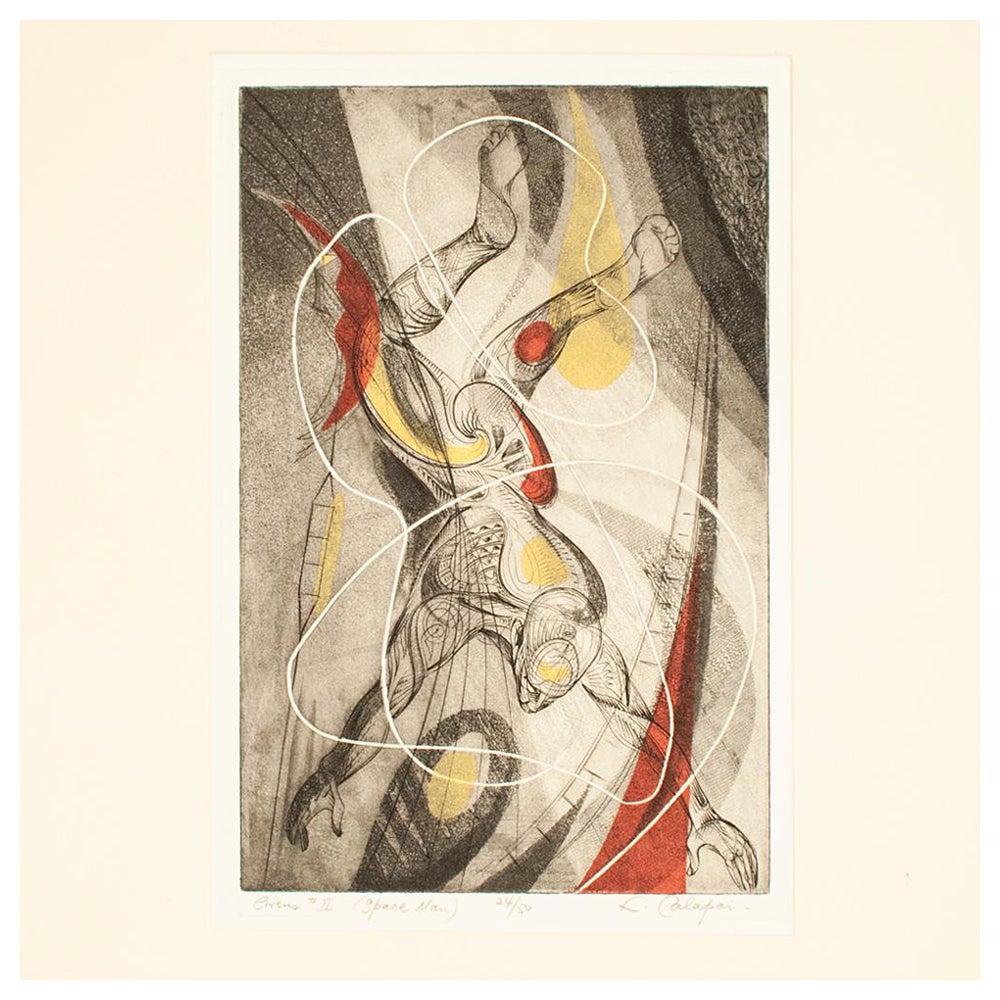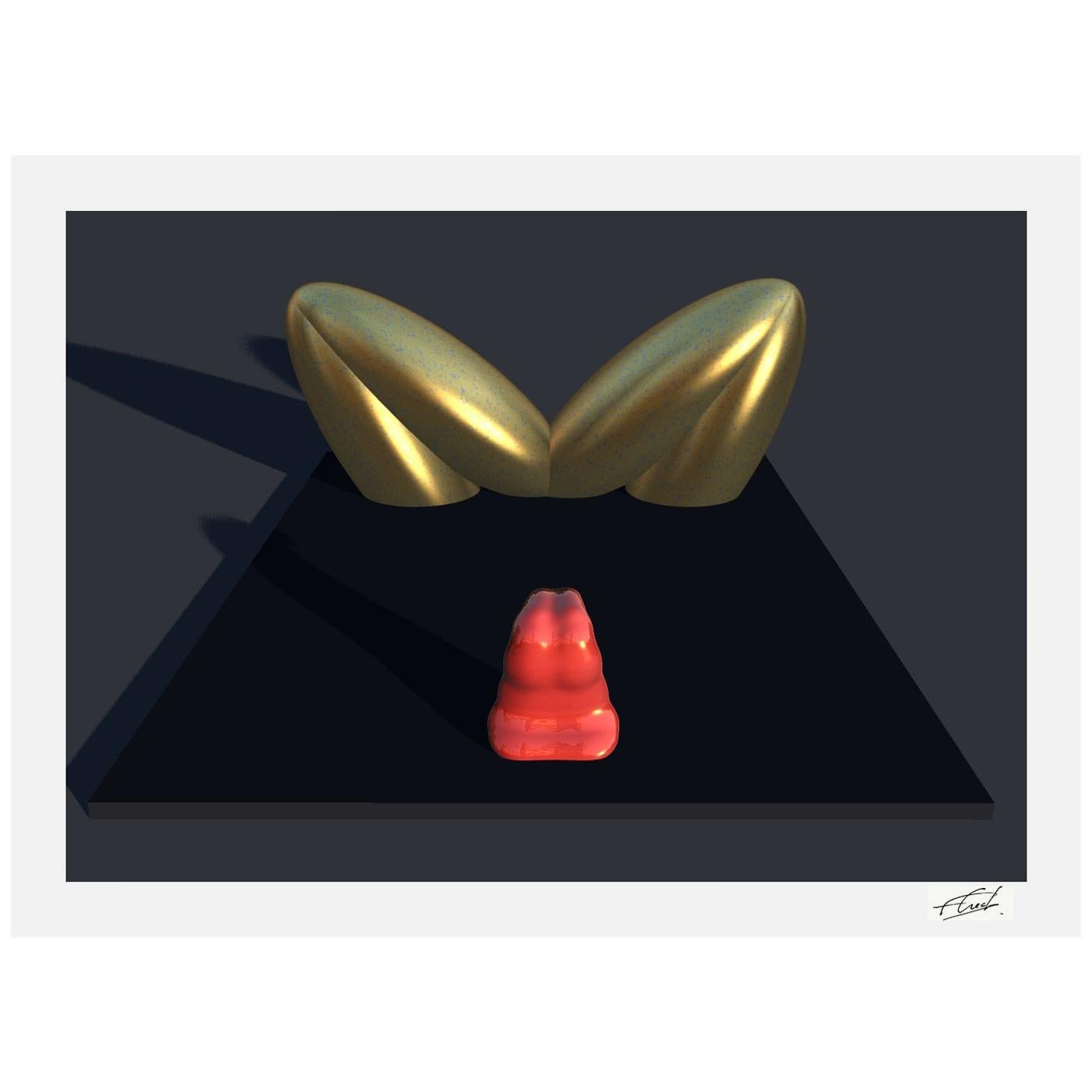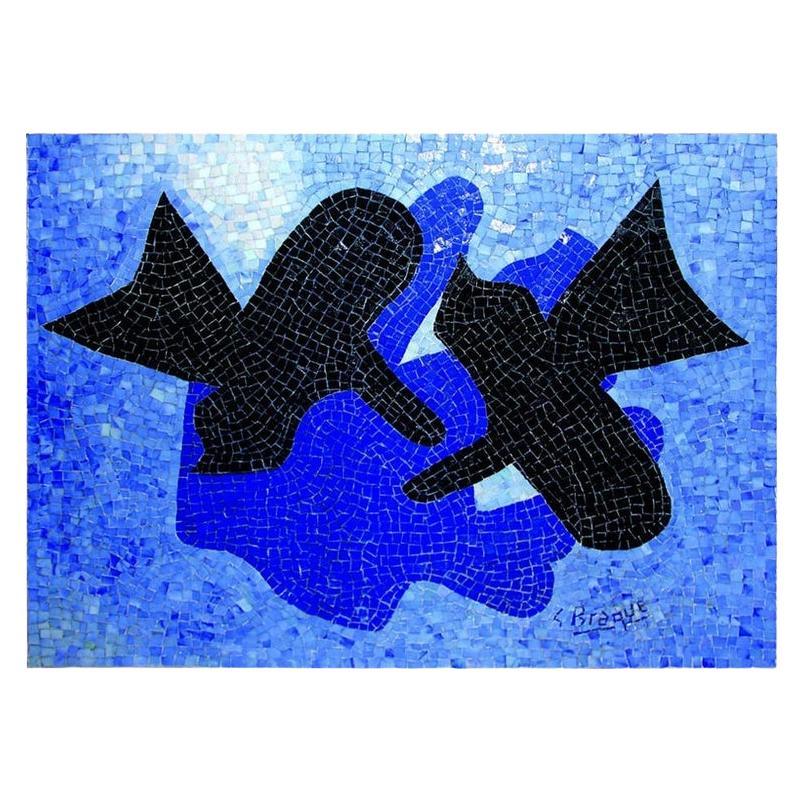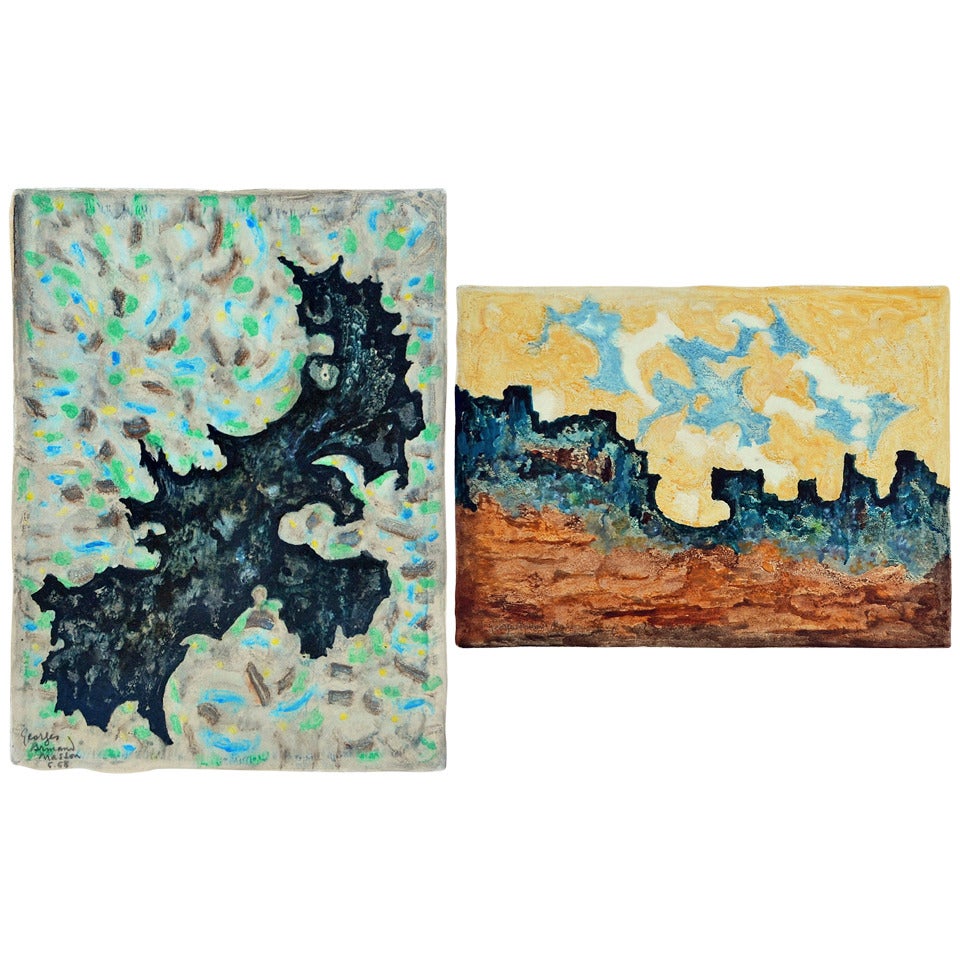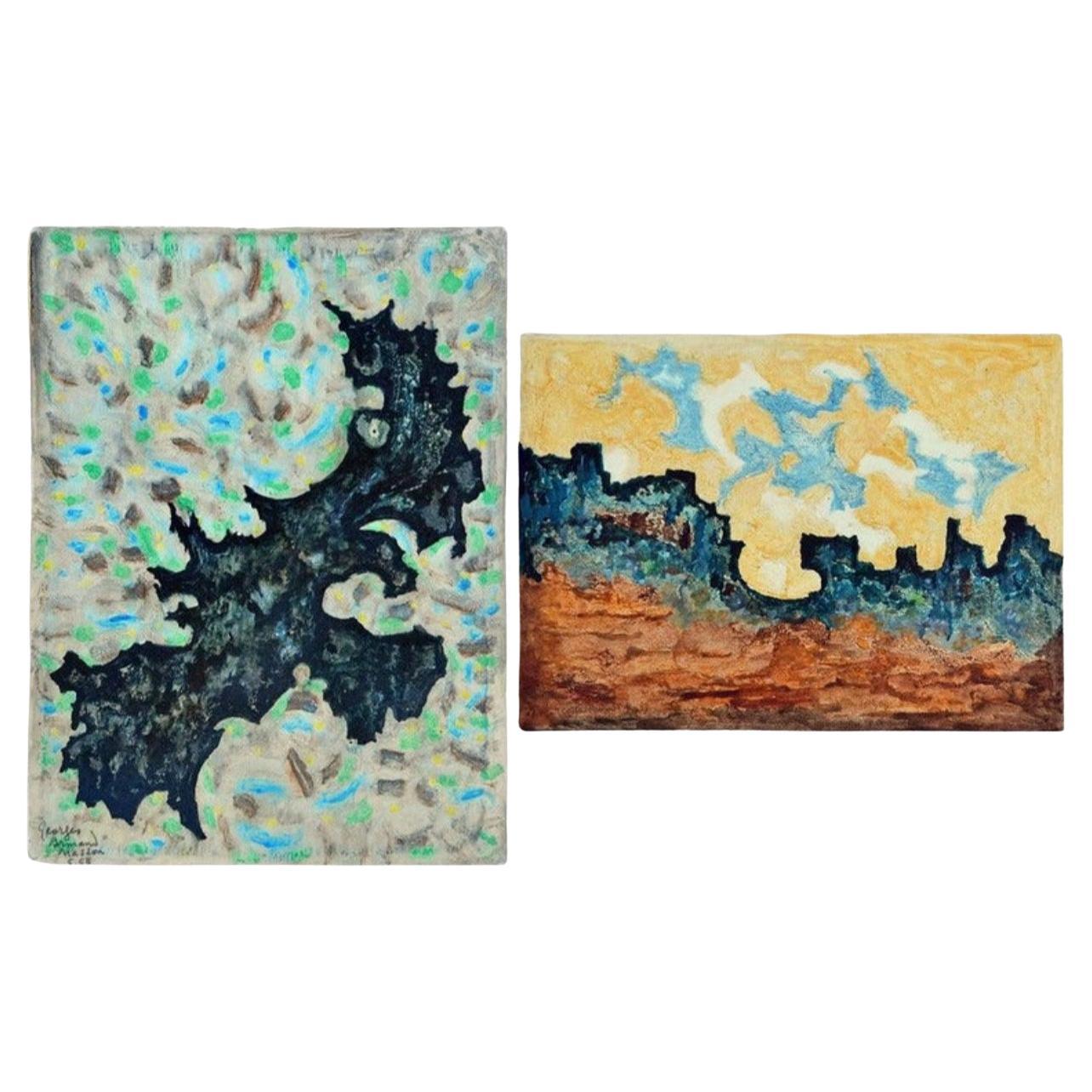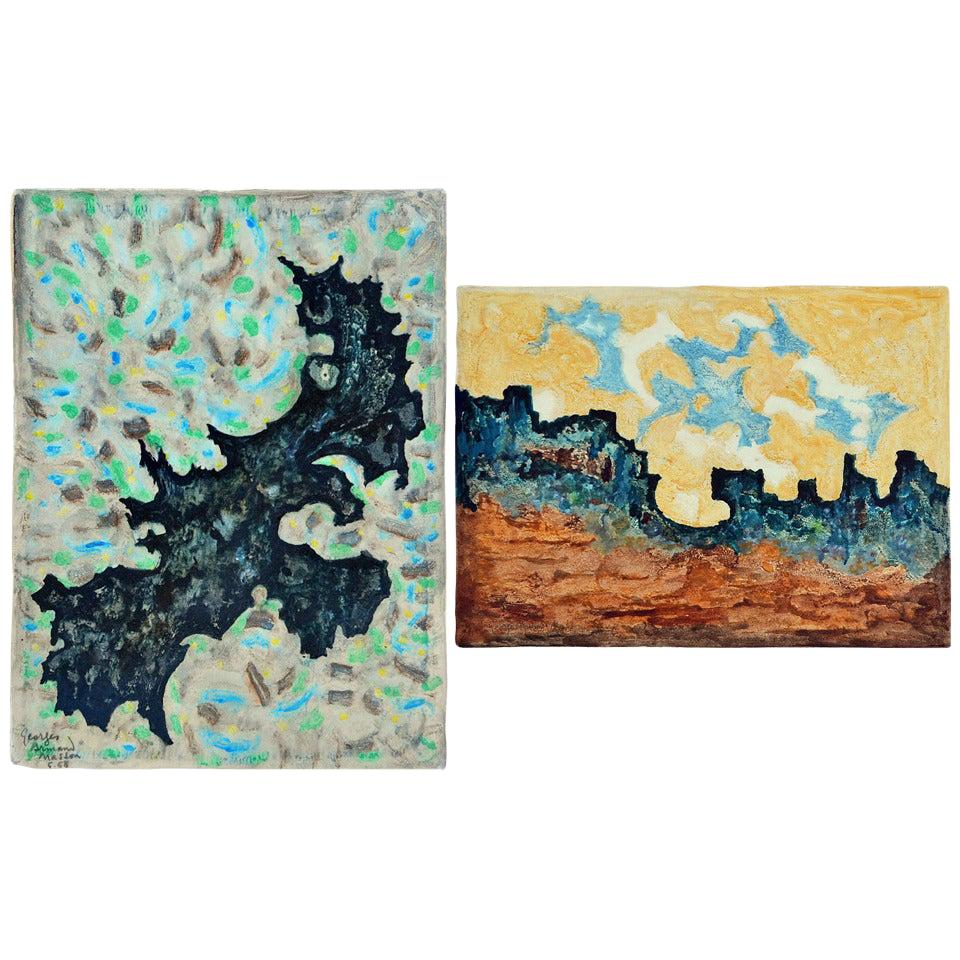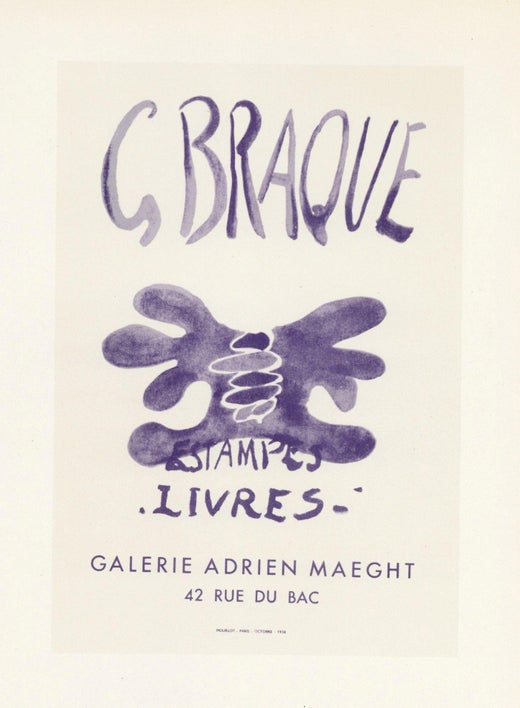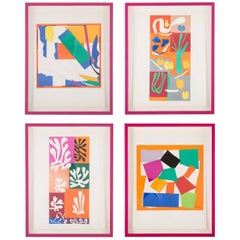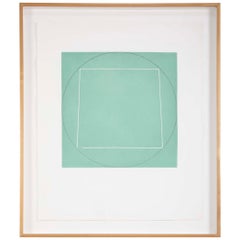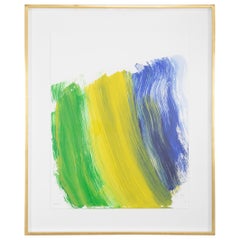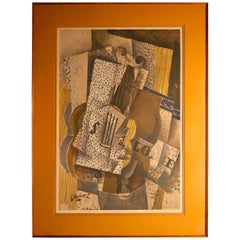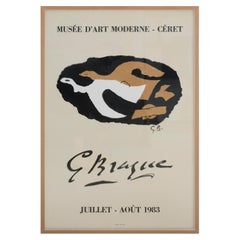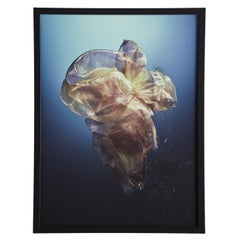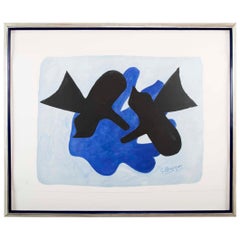
"L'Astre et l'Oiseau II" after Georges Braque
View Similar Items
Want more images or videos?
Request additional images or videos from the seller
1 of 9
"L'Astre et l'Oiseau II" after Georges Braque
About the Item
- Creator:(after) Georges Braque (Artist)
- Dimensions:Height: 43.75 in (111.13 cm)Width: 51 in (129.54 cm)Depth: 1.5 in (3.81 cm)
- Style:Modern (Of the Period)
- Materials and Techniques:
- Place of Origin:
- Period:
- Date of Manufacture:Mid-20th Century
- Condition:Wear consistent with age and use. Framed and ready to place.
- Seller Location:Stamford, CT
- Reference Number:Seller: Avery & Dash - NHS1stDibs: LU918613163071
(after) Georges Braque
Braque began his artistic career painting in a Fauvist style, strongly influenced by friends Raoul Dufy and Henri Matisse. In 1907, however, after befriending Pablo Picasso, Braque began focusing on Cubist compositions and a more muted color palette. He and Picasso would work closely until 1914 when Picasso began focusing on symbolism and portraiture, while Braque sought to explore “pure composition” void of meaning and symbolism. A 1922 exhibition at the Salon d’Automne in Paris launched Braque further into fame. He won several important prizes over the next few decades, including First Prize at the Carnegie International and the main prize for painting at the Venice Biennale. In 1961, Braque became the first living artist to ever have his work displayed at The Louvre. Throughout the 1930s and 40s, Braque created many works featuring Greek and Roman mythological imagery such as this print, though his hope was to use the images simply as visual objects stripped of their histories, lore, and symbolism.
About the Seller
4.9
Vetted Professional Seller
Every seller passes strict standards for authenticity and reliability
Established in 1999
1stDibs seller since 2011
550 sales on 1stDibs
Typical response time: 1 to 2 days
Authenticity Guarantee
In the unlikely event there’s an issue with an item’s authenticity, contact us within 1 year for a full refund. DetailsMoney-Back Guarantee
If your item is not as described, is damaged in transit, or does not arrive, contact us within 7 days for a full refund. Details24-Hour Cancellation
You have a 24-hour grace period in which to reconsider your purchase, with no questions asked.Vetted Professional Sellers
Our world-class sellers must adhere to strict standards for service and quality, maintaining the integrity of our listings.Price-Match Guarantee
If you find that a seller listed the same item for a lower price elsewhere, we’ll match it.Trusted Global Delivery
Our best-in-class carrier network provides specialized shipping options worldwide, including custom delivery.More From This Seller
View AllFour Vintage Lithographs after Henri Matisse.
By (after) Henri Matisse
Located in Stamford, CT
Four lithographs by Henri Matisse framed using acid free materials in handmade frames. Priced per frame.
Category
Vintage 1960s French Modern Contemporary Art
Materials
Paper
$1,490 / item
Robert Mangold, Aquatint Etching Titled "Distorted Square Within a Circle"
By Robert Mangold
Located in Stamford, CT
Robert Mangold "Distorted Square Within a Circle", 1973
Aquatint etching, Roman Numeral edition of 10 aside from the numbered edition of 50. Full sheet. Signed dated and numbered in...
Category
Vintage 1970s American Modern Prints
Materials
Paper
Victor Pasmore Etching from "The Dance of Man In Modern Times Portfolio"
By Victor Pasmore 1
Located in Stamford, CT
An etching and aquatint by Victor Pasmore from his portfolio titled "The Dance of Man in Modern Times". Victor Pasmore was one of the leading members of the English school of Abstract Expressionism. Please note this is one print from a larger portfolio. Other prints from this portfolio are available.
A bit about Pasmore-
Beginning in 1947, he developed a purely abstract style under the influence of Ben Nicholson and other artists associated with Circle, becoming a pioneering figure of the revival of interest in Constructivism in Britain following the War. [6] Pasmore's abstract work, often in collage and construction of reliefs, pioneered the use of new materials and was sometimes on a large architectural scale. Herbert Read described Pasmore's new style as "The most revolutionary event in post-war British art".[7]
In 1950, he was commissioned to design an abstract mural for a bus depot in Kingston upon Thames[8] and the following year Pasmore contributed a mural to the Festival of Britain that promoted a number of the British Constructivists.
Pasmore was a supporter of fellow artist Richard Hamilton, giving him a teaching job in Newcastle and contributing a constructivist structure to the exhibition "This Is Tomorrow" in collaboration with Erno Goldfinger and Helen Phillips...
Category
Vintage 1970s English Modern Prints
Materials
Paper
"Road To Rio", a 22 Color Silkscreen by Howard Hodgkin
By Howard Hodgkin
Located in Stamford, CT
A 2016 silkscreen print made on the occasion of the Rio Olympics titled "Road To Rio" by Howard Hodgkin. Numbered 88/350 signed H.H. and dated 2016 in pen...
Category
2010s English Modern Contemporary Art
Materials
Paper
Lithograph in Colors Composition by Egill Jacobsen
By Egill Jacobsen 1
Located in Stamford, CT
Lithograph in colors composition by Egill Jacobsen (Danish. 1918-1998). Signed EJ, EA. Framed using acid free materials, UV protective plexiglass in 22-karat yellow gold leaf frames....
Category
Late 20th Century Danish Modern Prints
Materials
Paper
New Breed Bay A 72 Color Silkscreen by Erik Parker
By Erik Parker
Located in Stamford, CT
A72 color silkscreen on paper. Published by Pace Editions, Inc., New York 2017. Edition of 50. Signed, numbered and dated by the artist. Newly framed in a 23-karat yellow gold leaf f...
Category
2010s American Modern Contemporary Art
Materials
Paper
You May Also Like
Georges Braque "Violin Melodie" Cubism H. Deschamps Lithographic Reproduction
By (after) Georges Braque
Located in Sharon, CT
A fine framed reproduction of an important early Georges Braque (1882-1963) by Henri Deschamps. Lithograph image size: 21 5/16" x 14 3/4". Signed in th...
Category
Mid-20th Century French Modern Prints
Materials
Paper
Lithograph Poster by Georges Braque, Musée D'art Moderne- Céret, France, 1983
By (after) Georges Braque
Located in Madrid, ES
Original Lithograph Poster by Georges Braque, printed by Atelier Mourlot, created for the 1983 Braque exhibition at Musée d’Art Moderne in Céret, France.
Georges Braque (1882-1963)...
Category
Vintage 1980s French Posters
Materials
Wood, Paper
Vibrant Color Lithograph after Henri Matisse
By Henri Matisse
Located in Atlanta, GA
Vibrant color lithograph after Henri Matisse, circa 1950s. Signed, dated 1951, and titled, all within the lithograph. It has been framed in a simple, clean lined black lacquer wooden...
Category
Vintage 1950s French Mid-Century Modern Prints
Materials
Glass, Wood, Paper
Parachute Print II by Brooke Vandever
Located in Chicago, IL
A captivating still life print photographed by Brooke Vandever and styled by Kimberly Swedelius. This photograph is printed on archival matte paper + available in a variety of sizes....
Category
2010s American Organic Modern Contemporary Art
Materials
Paper
$2,080 / item
After Georges Braque, Mosaïque, "Pelias Et Nelee"
Located in Geneve, CH
Beautiful Mosaic after Georges Braque.
Signed and numbered.
Edition of IV.
Dimensions: 120 x 160 cm.
Mosaic executed by Heidi Melano (one of the most important French Mosaist, she collaborated with Chagall, Braque, Modigliani).
This Mosaic has been exhibited in:
Art Museum of the Imperial Palace, China, 2012.
Nanjing museum, 2012.
Muse´e Georges Braque, Saint-Die´-des-Vosges, 2013.
From the gouache "Pelias et Ne´le´e,' dated 1962.
Bibliography:
"Les Me´tamorphoses de Braque" of Heger de Loewenfeld and Raphae¨l de Cuttoli, Editions FAC, Paris, 1989.
In 1961 Georges Braque decided with his laidary friend Heger de Loewenfeld to pick up certain of his works to in order to create artworks, this beautiful mosaic is one of them.
The father of Cubism.
Three Cubist that distinguishes art historian periods were initiated and developed by Georges Braque: The Cubist Ce´zanne (1907-1909), Executive (1909-1912) and synthetic (1912-1922).
Post-Impressionist and fawn, Braque no longer adheres to the contingency of a decorative way or the other. Ce´zanne’s paintings exhibited at the Grand Palais during the retrospective of 1907 are a Revelation: Ce´zanne sought and invented a pictorial language. In his footsteps, Braque went to the South with the reasons of the Master. He returned with Estaque landscapes and surprising Ciotat it keeps Cezanne geometric model and retains the “passages” continuity from one surface to another to create the sensation of “turning around” of the object represented. But he wants to go after the consequences of the vision of Cezanne. In his paintings Houses in L’Estaque (1908) it simplifies the volumes of houses, neglects detail by removing doors and windows: the plastic rhythm that builds the table. Large nude, a masterpiece of the period, can be considered the first work of Ce´zanne cubism.
Systematizing and deepening Braque discoveries open the door analytical cubism. In 1909, his painting became more cerebral than sensual. The pattern is recreated in the two-dimensionality of the canvas, leaving aside any illusionistic perspective. In still life with violin, objects are analyzed facets according to their characteristic elements, each facet referring to a particular view of the object. There are so many facets of points selected view: Table reflects the knowledge of the object and the ubiquity of the eye. Moreover, Braque is looking for the essence of the objects in the world rather than their contingency, which explains the absence of light source and use of muted colors (gray, ocher), contingent aspects of the object. But formal logic has stepped facets, erased any anecdote to the object and ultimately led to his painting a hermetic more marked on the edge of abstraction (see the series of Castle Roche-Guyon).
Braque, anxious to keep the concrete and refusing at all costs that the logic of Cubism takes the paintings to abstract, reintroduced signs of reality in his paintings in 1912 marks the beginning of Synthetic Cubism. Historians speak of “signs of real” rather than reality because what interests Braque, this is not to put reality into a table, but to create a painting which, by its language, refers to the real. To do this, he invented two major techniques 20th century inclusions and contributions. The inclusions consist of painting objects that have no real depth, materials (wallpaper in Nature morte aux playing cards faux wood...
Category
Early 2000s French Modern Wall-mounted Sculptures
Materials
Ceramic
$95,959 / item
Erte - Limited Edition Signed Screen Print After the Love and Tennis
Located in Pewsey, GB
Erte - A limited edition screen print after the Love and Tennis suite Numbered ,signed, mounted, glazed and framed.
Image size: 20 x 24 inches , Sheet size: 24 x 32 inches
Medium s...
Category
Late 20th Century American Modern Prints
Materials
Paper
